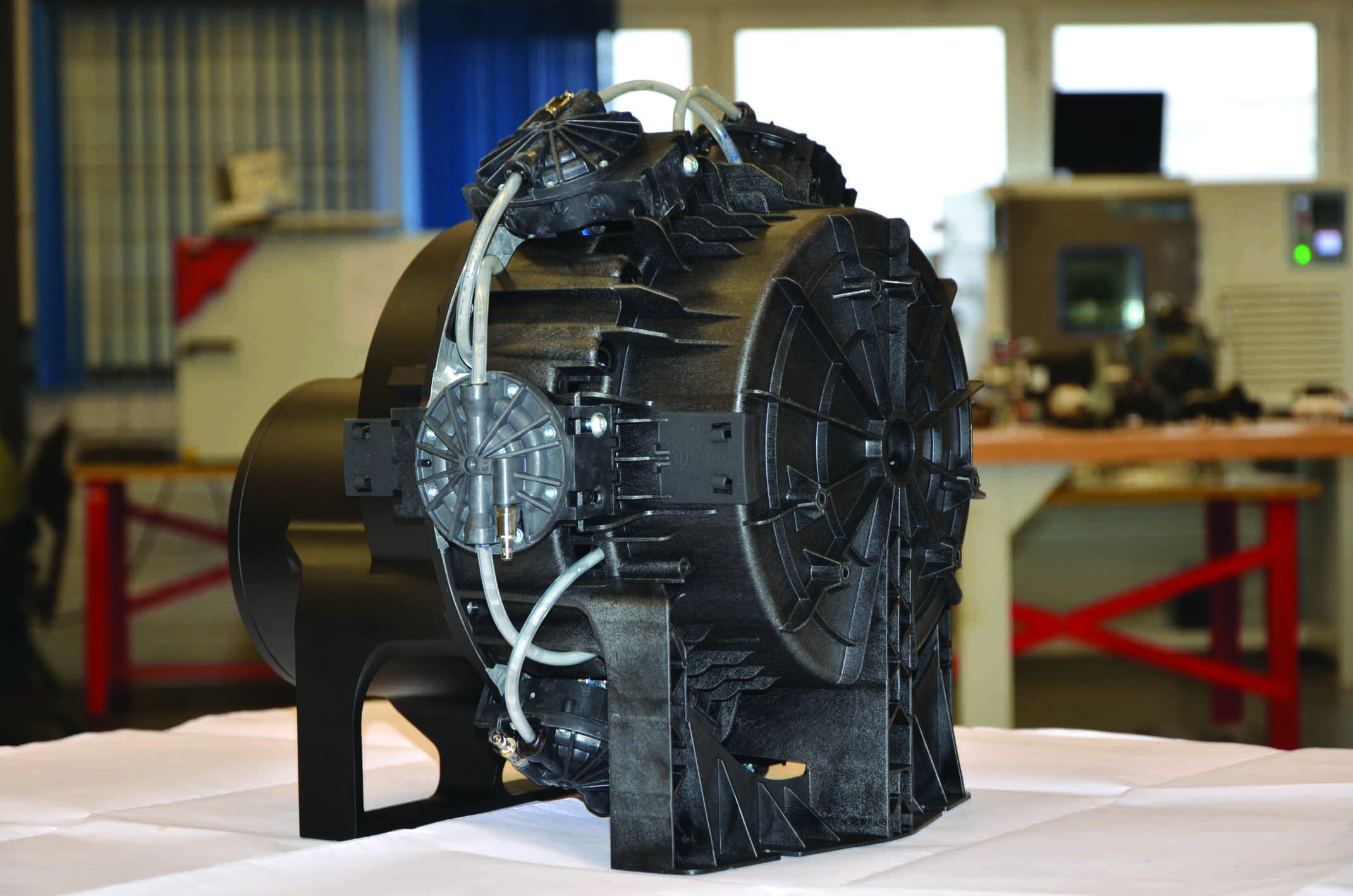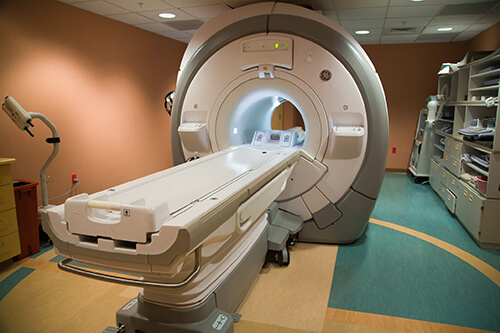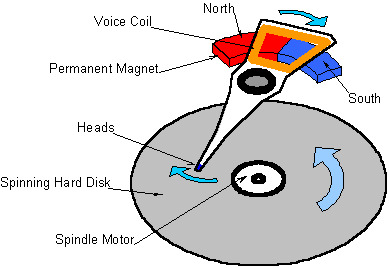Magnetism around us - Applications
He dreamed up the idea of using superconducting magnets to levitate a train car. Superconducting magnets are electromagnets that are cooled to extreme temperatures during use, which dramatically increases the power of the magnetic field. The first commercially operated high-speed superconducting Maglev train opened in Shanghai in 2004, while others are in operation in Japan and South Korea. In the United States, a number of routes are being explored to connect cities such as Baltimore and Washington, D.C. In Maglev, superconducting magnets suspend a train car above a U-shaped concrete guideway. Like ordinary magnets, these magnets repel one another when matching poles face each other. A Maglev train car is just a box with magnets on the four corners,” says Jesse Powell, the son of the Maglev inventor, who now works with his father. It’s a bit more complex than that, but the concept is simple. The magnets employed are superconducting, which means that when they are cooled to less than 450 degrees Fahrenheit below zero, they can generate magnetic fields up to 10 times stronger than ordinary electromagnets, enough to suspend and propel a train. These magnetic fields interact with simple metallic loops set into the concrete walls of the Maglev guideway. The loops are made of conductive materials, like aluminum, and when a magnetic field moves past, it creates an electric current that generates another magnetic field. Three types of loops are set into the guideway at specific intervals to do three important tasks: one creates a field that makes the train hover about 5 inches above the guideway; a second keeps the train stable horizontally. Both loops use magnetic repulsion to keep the train car in the optimal spot; the further it gets from the center of the guideway or the closer to the bottom, the more magnetic resistance pushes it back on track. The third set of loops is a propulsion system run by alternating current power. Here, both magnetic attraction and repulsion are used to move the train car along the guideway. Imagine the box with four magnets -- one on each corner. The front corners have magnets with north poles facing out, and the back corners have magnets with south poles outward. Electrifying the propulsion loops generates magnetic fields that both pull the train forward from the front and push it forward from behind. This floating magnet design creates a smooth trip. Even though the train can travel up to 375 miles per hour, a rider experiences less turbulence than on traditional steel wheel trains because the only source of friction is air. Another big benefit is safety. Maglev trains are “driven” by the powered guideway. Any two trains traveling the same route cannot catch up and crash into one another because they’re all being powered to move at the same speed. Similarly, traditional train derailments that occur because of cornering too quickly can’t happen with Maglev. The further a Maglev train gets from its normal position between the guideway walls, the stronger the magnetic force pushing it back into place becomes. This core feature is what’s most exciting to Jesse Powell. “With Maglev, there is no driver. The vehicles have to move where the network sends them. That’s basic physics. So now that we have computer algorithms for routing things very efficiently, we could change the scheduling of the entire network on the fly. It leads to a much more flexible transportation system in the future,” he said.
The key element of the toy is the magnetophoretic display panel, filled with a thick, opaque white liquid containing tiny dark magnetic particles. These particles can be drawn to the drawing surface by a magnet-tipped stylus or optionally-provided shapes, or removed to the hidden back side by a sliding eraser bar. The middle layer is divided into a honeycomb of cells, keeping the liquid static and the particles evenly distributed across the panel. The liquid is formulated so that the floating particles can be pulled through it in response to the magnetic forces, but not due to gravity.
The toy was originally produced as "Magna Doodle" by Tyco until 1997, when Tyco was purchased by Mattel. Mattel then sold the toy under its Fisher-Price brand. The brand was later sold to the Ohio Art Company. Today, the "Magna Doodle" brand is owned by Cra-Z-Art. Fisher-Price have produced their own alternative called the Doodle Pro, while Ohio Art produced the similar Doodle Sketch until 2016 when it sold the brand to Spin Master. The Doodle Pro is still available in the UK from the distribution company Megatel LTD.
Because the Magna Doodle uses no ink or graphite, scuba instructors use it as an underwater whiteboard when instructing students, and divers who wish to pass short notes. The Magna Doodle is not specifically designed to work underwater and many of its components can rust or otherwise deteriorate over time.
The first large family of magnetic actuators is based on the magnetic forces acting at distance, the Laplace-Lorentz forces and the reluctance forces. Linear types offer strokes in the range of 1 to 20mm, and are complementary to piezo actuators. They can be sorted in 3 categories:
Moving coil actuator : Placed in static magnetic field, a mobile coil driven by a current is submitted to the Laplace-Lorentz force. This force is proportional to the applied current. Thus these actuators are controllable. Since first applications were loud-speakers, they are also called voice-coils.
Moving magnet actuator : Placed between two magnet poles, a mobile permanent magnet can be switched from one pole to the other using coils. Such moving magnet actuators are bi-stable. They present high forces but are not so controllable.
Moving iron actuator : A soft magnetic part placed into a coil system naturally moves in a way that minimises the system magnetic energy. In standard electro-magnets, this reluctance force is larger than the Laplace force but it is only attractive and not controllable.
The second family of magnetic actuators is based on magnetically-controlled active materials.
Magnetostrictive actuator : These actuators use the magnetostrictive effect, which consists in the deformation of a magnetostrictive material when subjected to a magnetic effect. For example magnetostrictive deformation of Terfenol-D achieves 1600ppm, making this active material an interesting competitor of piezoelectric PZT ceramics for high power transducers or low voltage actuators.
Magneto Rheological Fluid Actuator : A Magneto Rheological Fluid (MRF) can solidify when subjected to a magnetic field. This effect can be used to design various MRF-based actuators : valves, brakes, clutches, semi-active dampers, smart hydrostatic / hydrodynamic bearings…
The third broad family of magnetic actuators is the electric motors also called electric rotating machines.
Techniques using diamagnetic materials are relatively undeveloped and strongly depend on material characteristics. As a result, most magnetic bearings are active magnetic bearings, using electromagnets which require continuous power input and an active control system to keep the load stable. In a combined design, permanent magnets are often used to carry the static load and the active magnetic bearing is used when the levitated object deviates from its optimum position. Magnetic bearings typically require a back-up bearing in the case of power or control system failure. Magnetic bearings are used in several industrial applications such as electrical power generation, petroleum refinement, machine tool operation and natural gas handling. They are also used in the Zippe-type centrifuge, for uranium enrichment and in turbomolecular pumps, where oil-lubricated bearings would be a source of contamination. An active magnetic bearing works on the principle of electromagnetic suspension based on the induction of eddy currents in a rotating conductor. When an electrically conducting material is moving in a magnetic field, a current will be generated in the material that counters the change in the magnetic field (known as Lenz's Law). This generates a current that will result in a magnetic field that is oriented opposite to the one from the magnet. The electrically conducting material is thus acting as a magnetic mirror. The hardware consists of an electromagnet assembly, a set of power amplifiers which supply current to the electromagnets, a controller, and gap sensors with associated electronics to provide the feedback required to control the position of the rotor within the gap. The power amplifier supplies equal bias current to two pairs of electromagnets on opposite sides of a rotor. This constant tug-of-war is mediated by the controller, which offsets the bias current by equal and opposite perturbations of current as the rotor deviates from its center position. The gap sensors are usually inductive in nature and sense in a differential mode. The power amplifiers in a modern commercial application are solid state devices which operate in a pulse width modulation configuration. The controller is usually a microprocessor or digital signal processor. Two types of instabilities are typically present in magnetic bearings. Attractive magnets produce an unstable static force that decreases with increasing distance and increases at decreasing distances. This can cause the bearing to become unbalanced. Secondly, because magnetism is a conservative force, it provides little damping; oscillations may cause loss of successful suspension if any driving forces are present.
This discovery was presumably quickly followed by a second, that an iron or steel needle touched by a lodestone for long enough also tends to align itself in a north-south direction. From the knowledge of which way is north, of course, any other direction can be found. The reason magnetic compasses work as they do is that Earth itself acts as an enormous bar magnet with a north-south field that causes freely moving magnets to take on the same orientation. The direction of Earth’s magnetic field is not quite parallel to the north-south axis of the globe, but it is close enough to make an uncorrected compass a reasonably good guide. The inaccuracy, known as variation (or declination), varies in magnitude from point to point on Earth. The deflection of a compass needle due to local magnetic influences is called deviation. Over the centuries a number of technical improvements have been made in the magnetic compass. Many of these were pioneered by the English, whose large empire was kept together by naval power and who hence relied heavily upon navigational devices. By the 13th century the compass needle had been mounted upon a pin standing on the bottom of the compass bowl. At first only north and south were marked on the bowl, but then the other 30 principal points of direction were filled in. A card with the points painted on it was mounted directly under the needle, permitting navigators to read their direction from the top of the card. The bowl itself was subsequently hung on gimbals (rings on the side that let it swing freely), ensuring that the card would always be level. In the 17th century the needle itself took the shape of a parallelogram, which was easier to mount than a thin needle. During the 15th century, navigators began to understand that compass needles point not directly to the North Pole but rather to some nearby point; in Europe, compass needles pointed slightly east of true north. To counteract this difficulty, British navigators adopted conventional meridional compasses, in which the north on the compass card and the “needle north” were the same when the ship passed a point in Cornwall, England. (The magnetic poles, however, wander in a predictable manner—in more recent centuries, Europeans have found magnetic north to be west of true north—and this must be considered for navigation.) "
Temperature exchange
A number of techniques have been used to increase this exchange, including active magnetic regenerative refrigeration (AMRR). The principle of this cycle uses a heat-transfer fluid – in contact with the magnetocaloric materials (MMC) – flowing from the cold side to the hot side when the MMC is heated (magnetised), and from the hot side to the cold side when the MMC is cooled down (demagnetised). This progressively increases the temperature difference between the cold and hot source to about 20K, making the system potentially suitable for commercial applications.
There are various potential applications. Initial developments have been orientated towards the commercial and domestic refrigeration markets, and include display cases, beverage coolers, and commercial or domestic fridges.
However, magnetic cooling can also be adapted to other refrigeration applications, such as air conditioning (including automotive), cryogenics or in heating systems – for example, heat pumps.
The demand is likely to be driven by environmental regulations, because magnetic heating or cooling does not use a refrigerant but, instead, a heating or cooling fluid, which could be water-based. As a result, there is no possibility of refrigerant leakage and no direct CO2 emissions, so it fully complies with all regulations, including F-Gas in Europe and Environmental Protection Agency regulations in the US.
In addition, the magnetocaloric cycle frequency is typically between 1Hz and 3Hz, so the rotation speed of the machine is slow and, therefore, very quiet compared to traditional compression systems. According to recent research, MCE is predicted to have a significantly higher efficiency (coefficient of performance) than the present conventional methods, with the potential for a 30% energy saving.
Even though some products have come to market, there are still challenges that need to be addressed before there is large-scale deployment of the technology. The main issue is the supply of magnetocaloric materials, which are scarce. Reducing the material content, or identifying new materials, would increase viability.
According to magnetic refrigeration engineers Cooltech Applications, the fabrication process is not yet optimised and production costs are still high. Interface optimisations (for example, heat exchangers) between the devices and the equipment to be refrigerated also need to be modified for maximum efficiency. Finally, development of prototypes for various specific applications needs to take place.
Although there is a lot of academic work by scientists and engineers at universities and research institutions worldwide, the current market development is not fully mature. Some of the companies pushing the boundaries of this technology include Cooltech Applications and Nextpac, which is working on heat-pump applications.
In 2015, Cooltech Applications said it had produced a 150-700W product as part of a refrigeration system, and the first tests will be carried out at end users’ sites, such as supermarkets, this year.
How does MRI work?
MRIs employ powerful magnets which produce a strong magnetic field that forces protons in the body to align with that field. When a radiofrequency current is then pulsed through the patient, the protons are stimulated, and spin out of equilibrium, straining against the pull of the magnetic field. When the radiofrequency field is turned off, the MRI sensors are able to detect the energy released as the protons realign with the magnetic field. The time it takes for the protons to realign with the magnetic field, as well as the amount of energy released, changes depending on the environment and the chemical nature of the molecules. Physicians are able to tell the difference between various types of tissues based on these magnetic properties.
How Do X-rays Work?
To obtain an MRI image, a patient is placed inside a large magnet and must remain very still during the imaging process in order not to blur the image. Contrast agents (often containing the element Gadolinium) may be given to a patient intravenously before or during the MRI to increase the speed at which protons realign with the magnetic field. The faster the protons realign, the brighter the image.
What is MRI used for?
MRI scanners are particularly well suited to image the non-bony parts or soft tissues of the body. They differ from computed tomography (CT), in that they do not use the damaging ionizing radiation of x-rays. The brain, spinal cord and nerves, as well as muscles, ligaments, and tendons are seen much more clearly with MRI than with regular x-rays and CT; for this reason MRI is often used to image knee and shoulder injuries.
In the brain, MRI can differentiate between white matter and grey matter and can also be used to diagnose aneurysms and tumors. Because MRI does not use x-rays or other radiation, it is the imaging modality of choice when frequent imaging is required for diagnosis or therapy, especially in the brain. However, MRI is more expensive than x-ray imaging or CT scanning.
One kind of specialized MRI is functional Magnetic Resonance Imaging (fMRI.) This is used to observe brain structures and determine which areas of the brain “activate” (consume more oxygen) during various cognitive tasks. It is used to advance the understanding of brain organization and offers a potential new standard for assessing neurological status and neurosurgical risk.
Are there risks?
Although MRI does not emit the ionizing radiation that is found in x-ray and CT imaging, it does employ a strong magnetic field. The magnetic field extends beyond the machine and exerts very powerful forces on objects of iron, some steels, and other magnetizable objects; it is strong enough to fling a wheelchair across the room. Patients should notify their physicians of any form of medical or implant prior to an MR scan.
When having an MRI scan, the following should be taken into consideration:
People with implants, particularly those containing iron, — pacemakers, vagus nerve stimulators, implantable cardioverter- defibrillators, loop recorders, insulin pumps, cochlear implants, deep brain stimulators, and capsules from capsule endoscopy should not enter an MRI machine.
Noise—loud noise commonly referred to as clicking and beeping, as well as sound intensity up to 120 decibels in certain MR scanners, may require special ear protection.
Nerve Stimulation—a twitching sensation sometimes results from the rapidly switched fields in the MRI.
Contrast agents—patients with severe renal failure who require dialysis may risk a rare but serious illness called nephrogenic systemic fibrosis that may be linked to the use of certain gadolinium-containing agents, such as gadodiamide and others. Although a causal link has not been established, current guidelines in the United States recommend that dialysis patients should only receive gadolinium agents when essential, and that dialysis should be performed as soon as possible after the scan to remove the agent from the body promptly.
Pregnancy—while no effects have been demonstrated on the fetus, it is recommended that MRI scans be avoided as a precaution especially in the first trimester of pregnancy when the fetus’ organs are being formed and contrast agents, if used, could enter the fetal bloodstream.
Claustrophobia—people with even mild claustrophobia may find it difficult to tolerate long scan times inside the machine. Familiarization with the machine and process, as well as visualization techniques, sedation, and anesthesia provide patients with mechanisms to overcome their discomfort. Additional coping mechanisms include listening to music or watching a video or movie, closing or covering the eyes, and holding a panic button. The open MRI is a machine that is open on the sides rather than a tube closed at one end, so it does not fully surround the patient. It was developed to accommodate the needs of patients who are uncomfortable with the narrow tunnel and noises of the traditional MRI and for patients whose size or weight make the traditional MRI impractical. Newer open MRI technology provides high quality images for many but not all types of examinations.
Introduction
Computer systems need to store data in digital format. One of the most widely used types of digital data storage is magnetic storage. This refers to any type of data storage using a magnetized medium. Digital data consists of binary information, which is data in the form of zero and ones. There are two types of magnetic polarities, each one used to represent either zero or one.
Several types of magnetized media are used in computer systems, including magnetic tape, floppy disks and hard disk drives. The basic approach to magnetic data storage, however, is very similar for the different types of media. A read-write head moves very close to the magnetic surface - the distance is often no more than tens of nanometers. The head is able to detect and modify the magnetization of the material. The magnetic surface is divided into very small regions, each of which has a mostly uniform magnetization. As the head moves relative to the surface, the changes in magnetization from region to region are detected and recorded as zeros and ones. Different technologies vary in how the head moves relative to the surface of the media and how the regions on the media are organized, but the basic principle is the same.
Magnetic storage is a form of non-volatile storage. This means that the data is not lost when the storage device is not powered. This is in contrast to volatile storage, which is typically used for the main memory of a computer system. Volatile storage requires a constant power supply - when a computer system is turned off, the data is lost.
Magnetic storage is widely used because it is relatively cheap in comparison with other storage technologies. Magnetic storage is read-write, which makes it possible to re-use the storage capacity over and over again by deleting older data. The storage capacity is also very large, making it attractive for storing very large amounts of data. The major limitation of magnetic storage is that accessing the data can be quite slow. As a result, most computer systems use magnetic storage for non-volatile storage of large amounts of data (typically in a form of a hard-disk drive) but a different type of storage for system memory, such as read-only memory (RAM), which is much smaller but can be accessed much faster.
Types of Magnetic Storage Devices
Magnetic tape is one of the older types of magnetic storage media. The magnetic tape recorder was invented in 1928 and was primarily used for analog audio recordings. Before music CDs were introduced in the 1980s, portable music devices used magnetic tape in the form of music cassettes. Early computers adapted this technology to store digital information. One of the major weaknesses is that information on a tape can only be accessed in a very sequential fashion. This is fine if you want to listen to a whole music album in sequence, but computer systems typically need to access data in a non-sequential manner. For magnetic tape, this means you may need to fast forward through a lot of tape to get to a specific piece of data. While magnetic tape is a very cheap way to store data, the very slow access to the data meant that it was primarily used for creating backups of data in case older forms of storage failed. Tape backup systems are still in use today, but their importance has greatly declined with the advance of cheap, large capacity hard-disk drives.
By measuring the period of the magnet's oscillation in Earth's magnetic field (or magnetosphere), Gauss was able to measure the strength of that field. Gauss's name, incidentally, would later be applied to the term for a unit of magnetic force. The gauss, however, has in recent years been largely replaced by the tesla, named after Nikola Tesla (1856-1943), which is equal to one newton/ampere meter (1 N/A·m) or 104 (10,000) gauss. As for magnetometers used in astronomical research, perhaps the most prominent—and certainly one of the most distant—ones is on Galileo, a craft launched by the U.S. National Aeronautics and Space Administration (NASA) toward Jupiter on October 15, 1989. Among other instruments on board Galileo, which has been in orbit around the solar system's largest planet since 1995, is a magnetometer for measuring Jupiter's magnetosphere and that of its surrounding asteroids and moons.
In designing ferrite materials, we usually look for low or practically zero magnetostriction because this led to high permeability and low loss. However, there are cases when we may take advantage of magnetostriction. One such case occurs when we require transducers to convert electrical energy to oscillatory mechanical or acoustic motion. When a magnetic energy is the one being converted, these are called magnetostrictive devices or magneto mechanical devices. Some applications using these are ultrasonic cleaners, ultrasonic machining, ultrasonic delay lines, and devices for generating and detecting underwater sound (sonar) The latter may be used for detecting submarines, fish etc.
A high magnetostriction is a necessary material requirement for the component. In addition it should also possess high resistivity, high Curie point, and a high magneto-mechanical coupling factor. The latter refers to the coupling between the mechanical resonance of the component (related to the dimensions) and the electrical resonance. The quality factor for each of these resonances is given by the Q of the system. Both of these should be as high as possible.
Cobalt alloys & oxides have high magnetostrictions but require high power to saturate. Nickel and nickel alloys are often used because there are lower power requirements. Ferrites are very useful at high frequencies (over MHz) but their brittleness is a problem in mechanical applications. Such properties as temperature dependencies of permeabilities are important since these devices may run hot. Some ferrites are very stable in this respect.









